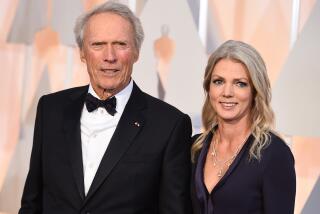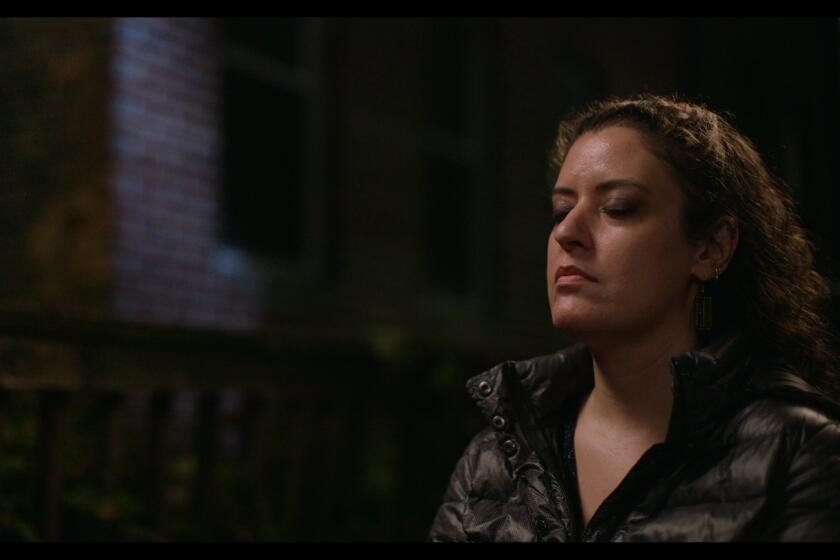They happened to connect
French cinematographer Stephane Fontaine has to admit that “deep down” it was intimidating to work with Oscar-winning actors Robert De Niro and Sean Penn in the Hollywood satire “What Just Happened,” which opens Friday.
“Every day you look into the camera and say, ‘Wow, this is Bob De Niro’ . . . but at the same time they are so kind,” Fontaine said. “What struck me was the huge simplicity of these people.”
So how did this soft-spoken director of photography end up working with such powerhouses? Chalk it up to “The Beat That My Heart Skipped.”
Fontaine received a Cesar -- France’s equivalent of the Oscar -- for his kinetic hand-held cinematography on the 2005 release directed by Jacques Audiard. Fontaine’s freewheeling style -- reminiscent of such seminal New Wave cinematographers as Raoul Coutard and Henri Decae -- gave a visceral texture to the drama about a young man torn between his criminal life and his desire to become a concert pianist.
Barry Levinson’s own heart skipped a beat or two watching Fontaine’s work. “He’s just exceptionally talented,” said Levinson, the “What Just Happened” director who brought Fontaine on board. “Sometimes you’ll see somebody’s work and then you’ll want to meet them. That’s when you get a good sense of the person. The work is one thing. Then you meet with someone and they have similar thoughts on a given project, it becomes very exciting.”
What Fontaine brings to the mix, said Levinson, is an ability to “have a great sense of intimacy without letting the style dominate the narrative. It is a wonderful blend.”
Levinson had earlier asked Fontaine to shoot his 2006 political comedy “Man of the Year” but couldn’t get the approval to hire him.
In the meantime, director Kasi Lemmons, who had also seen “The Beat That My Heart Skipped,” brought Fontaine to the U.S. to work on her 2007 indie hit “Talk to Me,” about outspoken 1960s-’70s radio personality Petey Greene.
Much to his surprise, Fontaine discovered that working in America wasn’t much different from toiling in the French film industry.
“The questions are the same,” he said by phone from his home in Paris. “It is still, ‘What can we do to tell a story? Is it right for the scene, or what would we do to enhance it?’ ”
Adapted by producer Art Linson from his book “What Just Happened? Bitter Hollywood Tales From the Front Line,” the comedy revolves around two hellacious weeks in the life of a Hollywood producer (De Niro) whose career is on the skids. Not only is he juggling two ex-wives -- one (Robin Wright Penn) for whom he still has feelings -- audiences are giving bad marks to his latest production starring Sean Penn (who plays himself). And to make matter worse, Bruce Willis (also as himself) shows up to begin his new film sporting a bushy beard and several extra pounds about his middle.
Just as with “The Beat . . . ,” Fontaine’s sneaky-Pete cinematography reflects the insane universe swirling around De Niro’s character. “He wanted to have a very lively and busy movie,” Fontaine said of Levinson. “He wanted to go hand-held any time we could, which was basically most of the time. I had a feeling he was very free in this movie, perhaps more than before. I think Barry didn’t want a movie about Hollywood to look like a Hollywood movie.”
Levinson had played around with a raw, in-your-face hand-held look more than a decade ago on his Emmy Award-winning NBC cop series “Homicide: Life on the Street.” But with “What Just Happened” he wasn’t going for the same atmosphere.
“I didn’t want [the movie] to be as ragged as the series,” Levinson said. “And I didn’t want the style to be too pervasive to the piece. It’s a little bit more sophisticated, rather than feeling like a hand-held kind of movie.”
On first blush, the filmmaker said, it may seem odd to have a French cinematographer capturing the cacophony, glamour and Hollywood tale.
“But he does understand the material,” Levinson said. “On some kinds of movies, the cinematographer may not have to know as much about the text. But here you have to make the camera move based on what you are hearing and understanding the text. Stephane has an extremely intuitive sensibility about that -- not only as the camera operator, but also his ability to light.
“Because when you only have 32 days to do the movie and you are all over the place, you have to find a way to light it so it doesn’t look like a really cheap sort of crude movie. He knows somehow how to get a scene lit, make the actors look good and shoot quickly.”
Said Fontaine: “With a small budget and a tight schedule you really have to go with the wind. You can’t bend or twist reality; you have to do with what you have before you.”
--
More to Read
Only good movies
Get the Indie Focus newsletter, Mark Olsen's weekly guide to the world of cinema.
You may occasionally receive promotional content from the Los Angeles Times.











